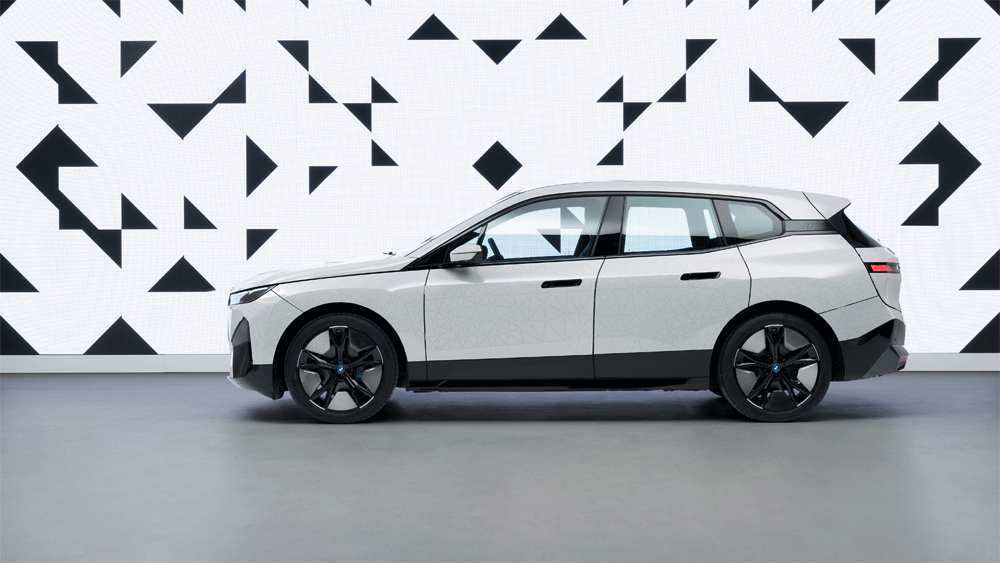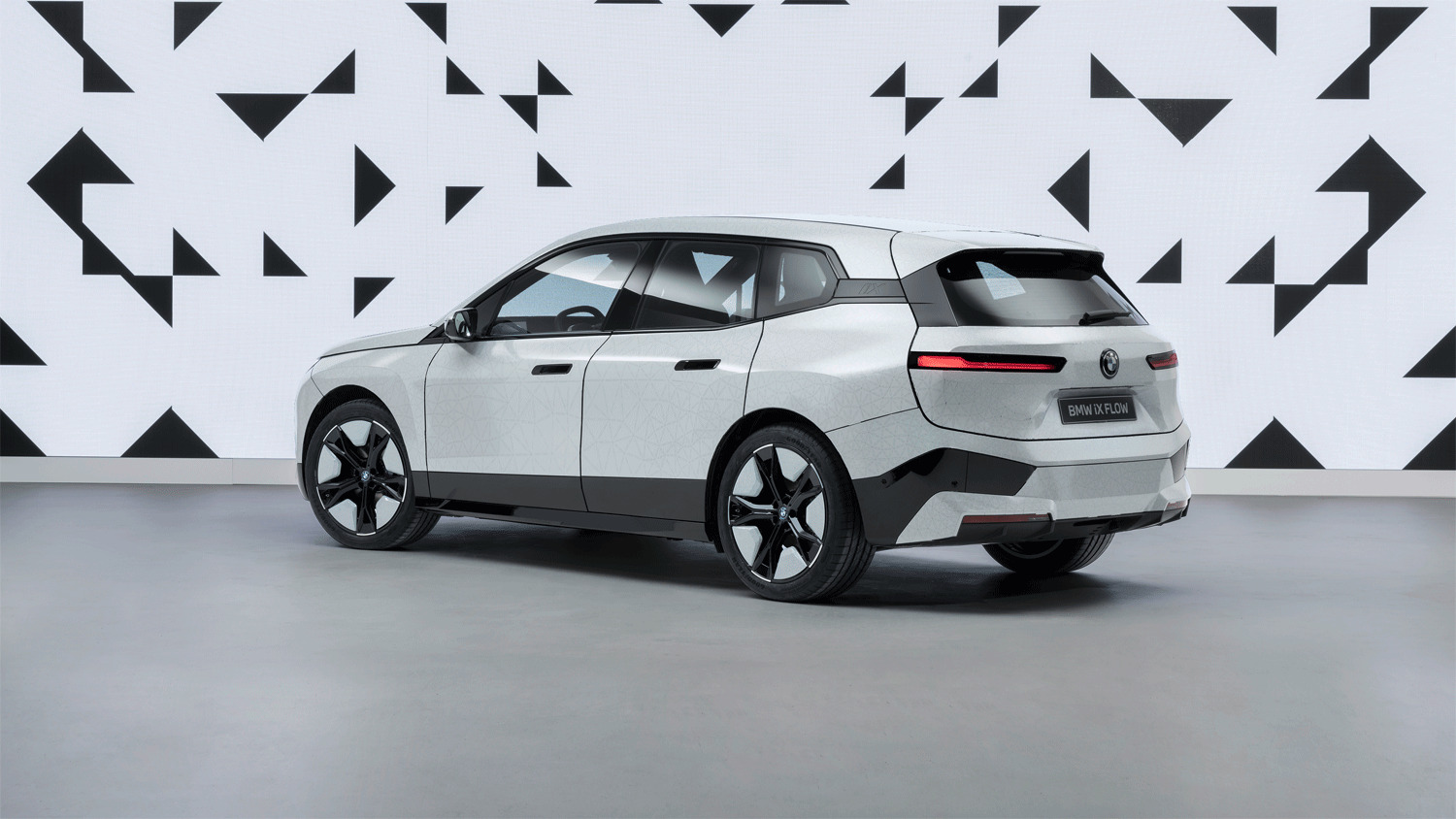It's the sort of thing you'd expect to see in a James Bond film, but BMW has made a color-changing car that actually works in real life.
Debuting at CES 2022, the customized, fully electric BMW iX has body panels made from E Ink displays - the same technology you find in the screen of a Kindle ereader - in a system it's calling 'iX Flow'.
Once the E Ink panels are on the car, they're coated with a special layer to help protect them against the elements.
In the virtual demonstration we were shown, the modified BMW iX was switched from white, to black, and back to white. It's a convincing showing, although when white, rather than one clean color, the car has a triangular pattern on the bodywork.
This is likely due to the physical makeup of the panels on the car, and something which is less obvious from a distance.

While the demo is currently just changing the vehicle’s color between black and white, BMW says that other colors are possible - opening up the possibility of some real variety for consumers in the future.
And future implementations of this tech won't be limited to color changes of the bodywork.
BMW explained that the tech could be used on specific areas of a car - such as the grille, to give it different appearances, or even on license plates (although there would be numerous legal limitations here).
There's more too - as on an ereader, with this technology you could get your car to display information (in images and text) on its exterior, things such as charge status, which would be a handy feature for EV owners.

So it works, but is it realistic?
E Ink panels are well known in the tech industry and while they're most commonly associated with e-readers, they've also appeared in wearables, smartphones, tablets and more.
A highly versatile and flexible product, E Ink can be cut into different shapes and hole-punched, which makes it ideal when it comes to covering the obscure angles of a car.
The panels house a bunch of transparent capsules with color pigments in them, and when a current is passed through it, certain colors can be called to the surface. This may sound like something that's potentially power intensive, but it's not.
In fact, only a very small amount of energy is required to make the colors switch, and none is required to keep a color fixed in place. This means the system has very low energy consumption, which should allay any fears about the feature draining the EV battery and hampering your car's range.
So, will we actually see something like this on a vehicle available to the general public? BMW certainly isn't ruling it out, noting that early indications for the tech are positive.
BMW believes it's realistic as E Ink is not that complex a material - and not unrealistic in terms of price, either.
- Check out all of TechRadar's CES 2022 coverage. We're bringing you all the breaking tech news and launches, everything from 8K TVs and foldable displays to new phones, laptops and smart home gadgets.
from TechRadar - All the latest technology news https://ift.tt/32KcyGp
No comments:
Post a Comment